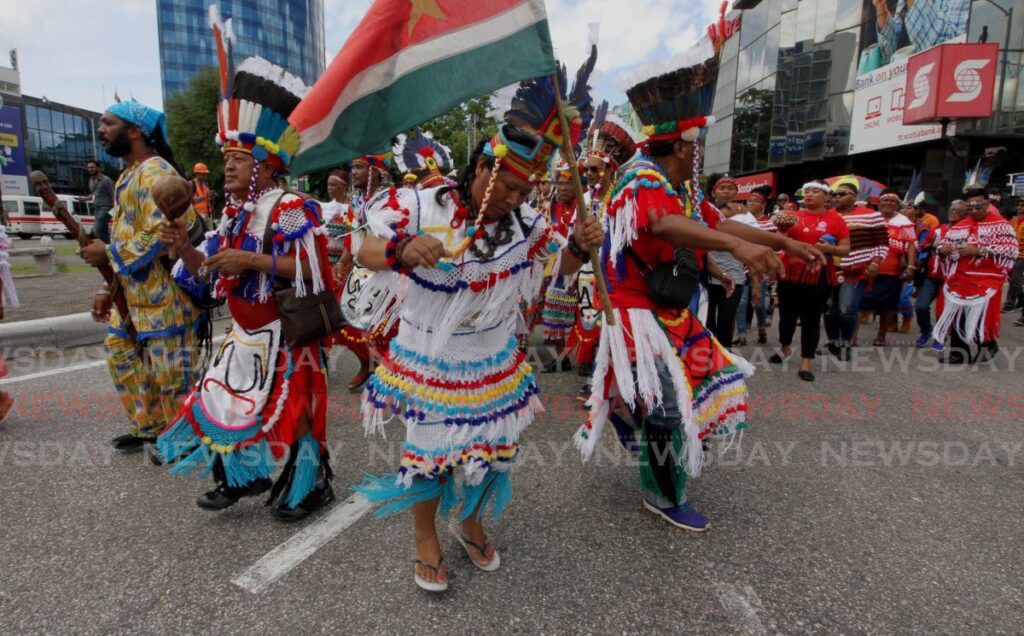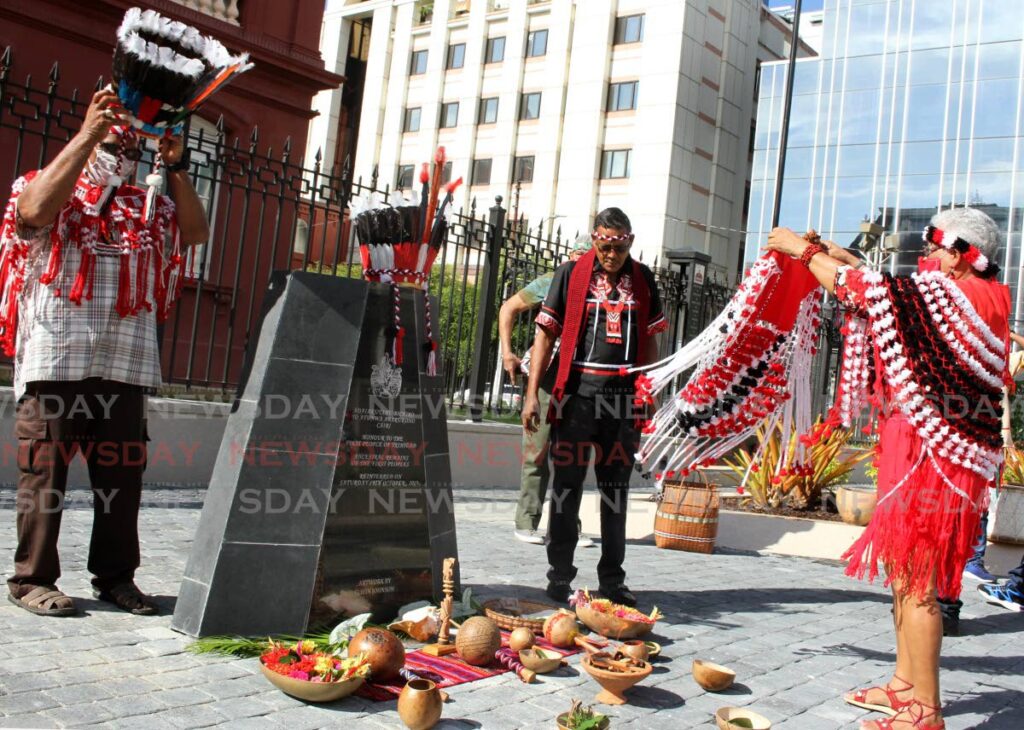Finding the roots of the Caribbean's First Peoples

Studies showing the migration and culture of the Caribbean's earliest settlers are still ongoing, but academics and indigenous groups are hopeful that modern technology can help paint a clearer picture of the region's first inhabitants.
As June has officially been declared Caribbean-American Heritage month by US President Joe Biden, members of the Caribbean diaspora have been inspired to take a closer look at their family history to understand their heritage and those of the region's First Peoples.
For now, researchers still at work on filling the gaps in the history of the Caribbean's first inhabitants are optimistic these secrets can be unlocked with new scientific tools.
In a virtual lecture on Ancient DNA and the Genetic History of the Caribbean, postdoctoral researcher at the Max Planck Institute for Evolutionary Anthropology Dr Kathrin Nägele said understanding the genealogy of indigenous peoples can further understanding not only of their biology but also their civilisation. The lecture was organised by the National Trust.
Referring to work done by palaeontologists who analysed the DNA from early farmers' skeletons to study the spread of agriculture across Europe in the Neolithic Age, Nägele said similar analyses done on the remains of early humans in the Caribbean could yield valuable information.

However, Nägele said one of the major challenges in these studies lies in the climate of the Caribbean and the availability of "workable" samples.
"Even shortly after the death of a person, their DNA becomes very fragmented, until only small fragments are left, and this process is accelerated in the presence of water and happens faster in warmer climates. The more time that passes, the more fragmented the DNA will be.
"We are also only now beginning to understand how the microclimates, like soil acidity and mineral content, are important factors in the quality of samples we will receive."
Despite this, newer techniques for extracting and analysing DNA samples can be used to explore more.
Nägele said these new methods usually use either the petrous bone found in the skull or the teeth, as the DNA is protected by the enamel. In this process a small hole is drilled into the sample to produce bone or tooth particles which can be digested to release the DNA samples.
Scientists then use a magnet to extract the desired fragments of DNA which they will use to study.
These DNA fragments, Nägele says, can tell a lot not only about the individual whose remains were found but also the condition of populations at the time of their death.

FILE PHOTO/ANGELO MARCELLE -
She noted that these samples are also useful in understanding the level of immunity of indigenous people at the time and the types of pathogens to which they would have been vulnerable.
Such scientific techniques are particularly effective in understanding the lives and interactions between different populations of early Caribbean people, given the region's complex history of colonisation and mixing with people from different parts of the globe.
Even with current technology it can be difficult to filter out the desired genetic information to map the history of early indigenous people.
Responding to Sunday Newsday's questions via e-mail on Thursday, Nägele said the genetic history of the region during the Ceramic Age – the period of the Caribbean's earliest settlement – was more complicated than originally thought, but was optimistic that as scientific methodologies are perfected over time, more detailed information would be available.
She noted that while researchers have a good general idea of the Caribbean's genealogical history, there were crucial details that still needed to be understood for researchers to get a clearer picture of indigenous people.
"There are some signals we do not understand yet. In Trinidad, we are only just starting. I wanted to inform the public in Trinidad about this work that we are starting, and I will be back with new results once the data is analysed."
For now Nägele says researchers have a lot of work ahead of them but are hopeful that local First Peoples' groups will take an interest in the research and co-operate with their work.
"From Trinidad this will be the first whole genome data produced.
"If this collaboration is well received by Trinidad and its First Peoples, we can discuss hope to extend the sampling and continue working on the topic with this line of evidence."
Contacted for comment, chief of the Santa Rosa First Peoples Ricardo Bharath Hernandez said while there was an interest in having researchers visit Trinidad, he hoped they would make their findings more accessible to the First Peoples communities.
He said academics routinely visited Trinidad for research on First Peoples, but have not made their work available to them and hoped that future programmes would keep their community better informed.
"In Manzanilla I know they did a lot of research and the owners of the land promised to give us, the local community, a copy of the research, which they can't seem to get a copy of at all.
"We don't have a problem with others coming, but what we say is, when they do their research, they should supply the local community with a copy, so that the local community can be educated and will have knowledge on what was obtained on their ancestors and so on.
"It is through research we can really know much more than we know now. So we don't have a problem with that."
He said the First Peoples community endorsed any efforts to shed further light on the lives of their ancestors.
Referring to their participation in ancestry testing by academia from the University of Pennsylvania a few years ago, Hernandez said such initiatives were welcome.
He also hoped the research could reveal further details on a group of indigenous settlers called the Napuyos and their lineage from tribes in mainland South America.
"It is believed the community in Arima, the Napuyos, inhabited this area, so we, for our own records and own edification,we would like to know a little bit more about the Nepuyos to see which group exists now on the mainland of South America is closest related to this group we call the Napuyos. Because we have the Carinas which is the Caribs, the Laconos, which are the Arawaks, you have the Waraos, and all of these are different nations.
"The Napuyos was a nation, but we understand that it was a mixture of two or more nations. So in the research if we can discover a little more about that then we will be happy about that."

Nägele said she would also be interested in exploring a link in genealogy between South American indigenous people and those in Trinidad and other islands of the Caribbean.
"I think the most interesting will be to compare settlers from different periods to see how the genetics changed with the geographical situation in the Caribbean. Was there more exchange with the mainland (eg Venezuela) when they were connected to the mainland? Did this change later, or already in the Archaic Age, when the island was separated from the continents?
"I'm also interested to see if the closeness to the mainland led to stronger connections or more migrations."
For now scientists continue to work with the tools and samples available to see the bigger picture of the Caribbean's first inhabitants. Like an actual puzzle, these efforts require an eye for detail as well as time and patience to understand their history.

Comments
"Finding the roots of the Caribbean’s First Peoples"